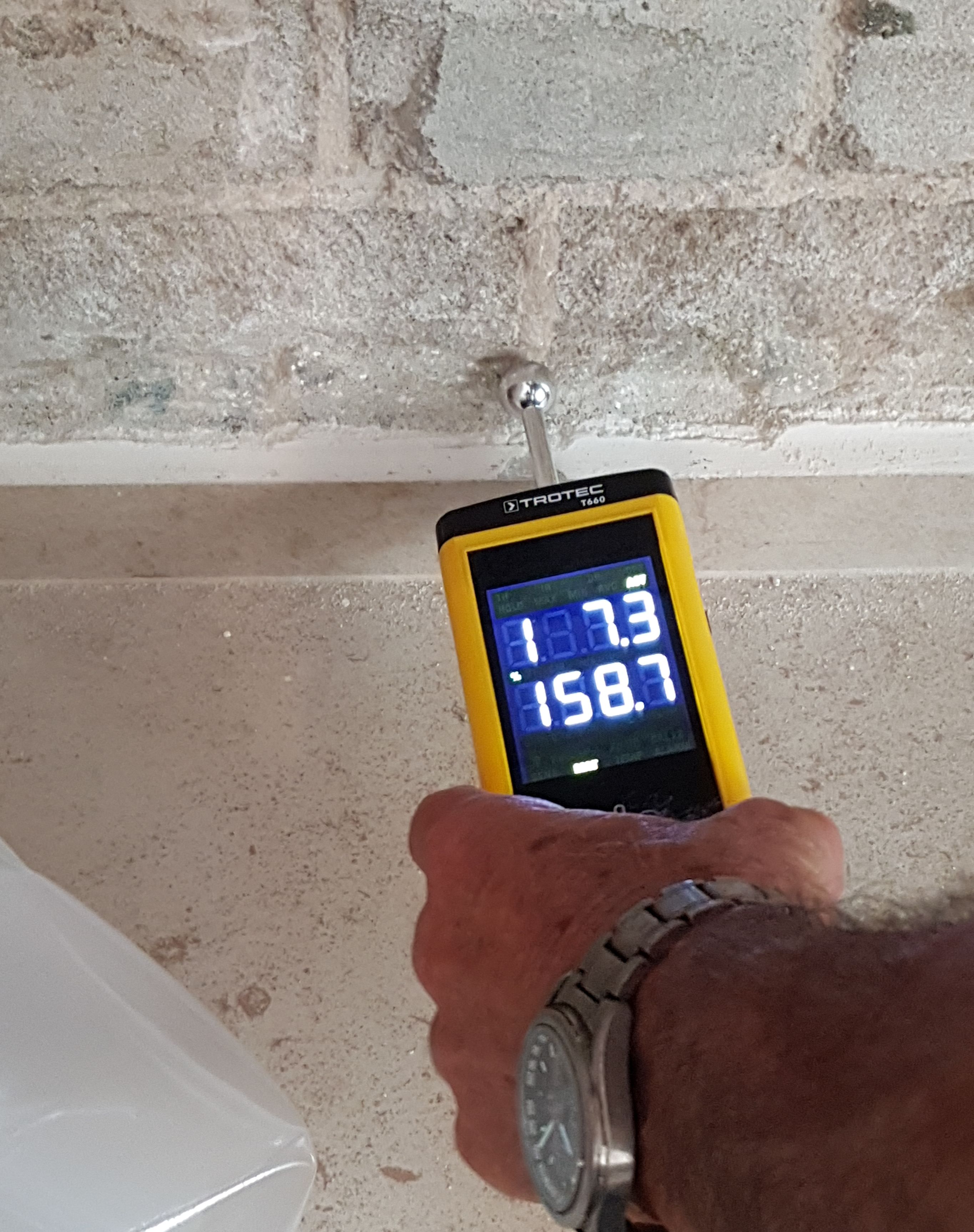How a Moisture Meter Can Improve Your Construction Projects and Avoid Damage
How a Moisture Meter Can Improve Your Construction Projects and Avoid Damage
Blog Article
Explore the World of Moisture Meters: Whatever You Need to Know
In the world of moisture meters lies a globe of accuracy and functionality that typically goes undetected. These devices, while seemingly simple, hold a wealth of details that can significantly impact numerous industries and applications. Understanding how moisture meters run, the different kinds offered, and their varied uses can lose light on their relevance in guaranteeing top quality and performance. By exploring the intricacies of moisture meters, one can reveal a beneficial device that goes beyond simple dimension, providing insights that can make a significant distinction in numerous areas.
How Moisture Meters Work
Moisture meters operate by gauging the electric conductivity or capacitance of materials to identify the dampness material existing. These meters are very useful tools throughout various sectors, including woodworking, construction, and farming. By utilizing different techniques such as pin-type or pinless innovation, wetness meters provide accurate readings that assist specialists make notified choices.
Pin-type moisture meters function by inserting the sharp pins right into the product being tested. On the various other hand, pinless moisture meters make use of electro-magnetic signals to check a larger location without creating any kind of damages to the product's surface area.
Despite the technique used, moisture meters play an essential duty in protecting against issues such as mold growth, structural damage, or product defects triggered by excess wetness. Comprehending how these meters work is essential for making sure the top quality and integrity of materials in various applications.
Sorts Of Moisture Meters
Offered the critical role wetness meters play in various sectors, it is necessary to recognize the various types readily available to experts for properly evaluating dampness levels - Moisture Meter. There are primarily two main sorts of dampness meters: pin-type and pinless wetness meters

On the various other hand, pinless dampness meters utilize electro-magnetic sensing unit plates to scan a larger area of the product without creating any damage. This kind appropriates for rapidly scanning large locations and is frequently used for floor covering, wall surfaces, and ceilings. Pinless meters are convenient for taking analyses on finished surface areas without leaving any type of noticeable marks.
Both kinds of moisture meters have their benefits and are selected based upon the particular demands of the task at hand. Recognizing the distinctions in between these types is essential for professionals to make exact dampness evaluations.
Applications Across Industries
Building and construction specialists depend on wetness meters to analyze the wetness levels in building products like wood, concrete, and drywall, which is essential for maintaining structural stability and protecting against problems like rot or mold. The floor covering market makes use of dampness meters to determine the moisture material in subfloors before installing numerous floor coverings, protecting against costly problems due to excess moisture. In the food sector, dampness meters are made use of to monitor and regulate moisture degrees in products such as grains, nuts, and dried out fruits to maintain quality and quality.
Tips for Making Use Of Dampness Meters
Utilize the wetness meter's calibration setups to guarantee precise analyses when determining the moisture web content in numerous products. Calibration is essential for the appropriate performance of a moisture meter. Prior to each use, it is a good idea to check and readjust the calibration setups according to the specific material being checked. Furthermore, make certain the meter is set to the proper dampness variety for the material you are gauging to acquire the most exact outcomes.
When making use of a site link pin-type dampness meter, put the pins to the ideal depth suggested for the product being tested. This makes sure that the dampness analyses are drawn from the correct depth within the material, offering an extra accurate representation of its dampness content. For pinless moisture meters, bear in mind to maintain correct contact with the material's surface to obtain dependable analyses.
Frequently inspect and replace the batteries in your moisture meter to avoid imprecise readings directory as a result of low power. When not in usage to prolong its lifespan and preserve its precision, Store the meter in a dry and secure location. By adhering to these tips, you can make best use of the performance of your dampness meter and get precise moisture content dimensions across different materials.
Upkeep and Calibration
To make certain the accuracy of moisture material dimensions, regular upkeep and calibration of the wetness meter are vital steps in its correct functioning. Maintenance includes keeping the dampness meter totally free and tidy from particles that could influence its analyses. It is essential to adhere to the maker's guidelines for cleansing to avoid damage to the tool. Additionally, normal calibration is necessary to validate the accuracy of the analyses. Calibration adjusts the wetness meter to ensure that it supplies consistent and trustworthy outcomes.
Calibration must be executed periodically, specifically if the dampness meter is made use of regularly or in critical applications where precise measurements are called for. By adjusting the moisture and maintaining meter regularly, users can rely on the accuracy of the wetness material dimensions acquired.
Final Thought

To conclude, moisture meters play an essential role in various markets by precisely gauging the wetness content of this contact form materials. Understanding how these devices function, the different kinds readily available, and appropriate maintenance and calibration are necessary for acquiring dependable outcomes. Whether in building and construction, production, or agriculture, making use of wetness meters aids make certain quality assurance and performance in procedures.

In verdict, wetness meters play an essential role in different industries by accurately measuring the dampness material of materials.
Report this page